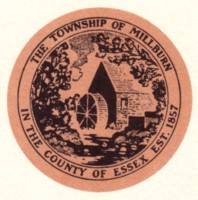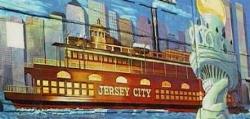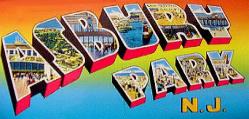 |  |  |
|
| ||
 |  |  |
 |  |  |
|
| ||
 |  |  |
|
|
|
Development After World War I By the Millburn Centennial Committee
Originally appeared in 1957 |
 |
|
|
|
It had taken over two hundred years for the community to achieve a population of about 4,000 (1920 population 4,633 1940 - 11,652), but another 4,000 was added in the next ten years (1930 population 8,602 1950 - 14,560). By
1955 the 1930 population figure of 8,602 had almost doubled itself again, but
the 1920-1930 decade still holds the record for greatest increase within a ten-year record.
With the increasing demand for home building sites came the means for supplying that demand. As the older citizens died and modes of living changed, the large land holdings began to break up. Some of the extensive lands of the Whittingham family, descendants on the maternal side of Israel D. Condit, and Wooldridge Eaglesfield, became the South Mountain Estates. The Glen- wood section was carved mostly from Wellington Campbell's acreage. Un- developed or farm lands of Brison, Farley, Renwick, Taylor, Hack, Hartshorn, Traphagen, and others, gradually went on the real estate market and out of them during the next twenty-five years grew the developments today known as Knollwood, Nottingham, Crossgates, Beechcroft, Homestead, Woodfield, Old Short Hills Estates, Deerfield, Cross Roads, and Country Club. With the exception of the South Mountain Estates most of this growth has taken place in the Short Hills section. The farm lands of the settlers in Millburn and Wyoming, having been conveyed in smaller parcels, were not subject to such subdivision and their population, therefore, tended to be more stable and subject to a more natural growth. As far back as 1891 the Short Hills Item commented on the Wyoming section thus:
The Jewish community laid the cornerstone for its first temple B'nai Israel in 1924 on property on Lackawanna Place. The congregation traced its origin back almost to the beginning of the century when it met in private homes or rented stores for services. Rev. Hugh W. Dickenson extended to it the hospitality of St. Stephen's Church, and for several years the High Holy Day services were held in the Parish House of St. Stephen's. A new temple on Millburn Avenue, which has attracted nationwide attention because of its modern religious architecture and its abstract art by advance-guard artists, was dedicated in 1951. The former property on Lackawanna Place was acquired by the Township and the old temple was remodelled to house Millburn's new Public Library. The Community Congregational Church held its first service on September 27, 1953, in the Racquets Club, with Rev. H. Otheman Smith acting as Pastor. A parsonage at 29 Hobart Avenue was purchased, and on June 5, 1955, groundbreaking ceremonies were held for the new church, of colonial architecture, at the corner of Parsonage Hill Road and Hartshorn Drive. In October, 1953, groundbreaking services were held by the Short Hills Ward of the Church of Jesus Christ of the Latter Day Saints (Mormon), and the finished church, also of modern architecture based on a Colonial theme, was dedicated on September 16, 1956. It stands on a 7-acre tract of land on White Oak Ridge Road, and represents, except for excavation, foundation, and masonry work, the combined donated labor of over a hundred doctors, lawyers, engineers, scientists, and craftsmen of its faith. Land for the first playground for children was provided and equipped by the Hartshorn family in 1915, on Millburn Avenue. It was under the supervision of the Neighborhood Association. However, recreation for everyone, regardless of age, sex, or economic condition, did not become a reality until 1924 when Mrs. John Taylor purchased from Mrs. Ehzabeth Whittingham, the 13-acre tract in the heart of Millburn, comprising the present Taylor Park, and gave it, fully landscaped and equipped with recreational facilities, to the Township on Memorial Day in 1924, as a memorial to her husband, John Taylor. Brian Philpot presented the gift on behalf of Mrs. Taylor and Dean Emery made the speech of acceptance. Tribute was paid during the ceremonies, not only to Mrs. Taylor, but to the three members of the Shade Tree Commission, William F. Patterson, Mrs. William K. Wallbridge, and Frank Schmidt, who had worked to bring the plans to completion. The first Recreation House in the playground area, near Main Street, is now used by the Girl Scouts, but in 1934 with Federal aid, a larger stone house was built in the center of the Park. This house is now in process of being greatly enlarged to meet the extensive uses to which it is put for social events, boys and girls club activities, and as a meeting place for many of the organizations of the Township, and other programs. The Park's recreational facilities are supplemented by public school buildings, grounds, and the Millburn Athletic Field and Stadium. Another 66-acre park and recreation area, to be known as "White Oak Ridge Park" is being developed on the site of the Township Poor Farm, and will be dedicated during the Centennial Celebration. All recreational facilities are now under the direction of the three-member Recreation Commission which employs a full-time paid Recreation Director, a paid full-time assistant, and several part-time personnel. The South Mountain Reservation, under the control of the Essex County Park Commission, provides another playground and recrea- tion area for Millburn people. The reservation of more than 2,000 acres, more than half of which lies in Millburn Township was mostly acquired in 1895. It insures in perpetuity a natural area of woods, mountains, streams, and valleys free from the encroachments of civilization. Carefully forested trees, wildlife protection, a plant nursery, and deer paddock are some of its features. Progress toward urbanity brought other changes in the local scene. A flag pole, erected in 1917, in the center of the "Four Corners", was removed and set up in Taylor Park because of the hazard to traffic it presented. Prohibition had brought an end to the gay life of the hotels. The Millburn Hotel was eventually moved a few doors up the street to No. 347-9 Millburn Avenue where it was given a new brick facade and began life over again as a retail store. The Vauxhall Inn was razed in 1936 to make room for a commercial building which now houses the Woolworth store. Buses replaced trolley cars and the first electric train between Hoboken and Morristown ran on December 18, 1930. An outgrowth of an early interest in gardening was the development of the "Arboretum and Bird Sanctuary" by Miss Cora Hartshorn. Miss Hartshorn commenced its development in 1923 on a 16.45 acre tract on Forest Drive, in a woodland of little hills and valleys formed by the terminal moraine. It provides refuge for countless birds, and over 200 varieties of wildflowers. Its stone house completed in 1933 was designed by architect Bernhardt E. Muller, and built from stone from the Hartshorn quarries under the personal supervision of Stewart Hartshorn then in his 94th year. Its oak timbers also came from Hartshorn land. Mr. Hartshorn's Music Hall, which had played such a prominent role in the cultural and social life of the Short Hills of the late 19th century, following many vicissitudes, settled down in 1934 to being the Racquets Club. In 1889 it had changed its name to the "Short Hills Casino"; then had housed the Short Hills Club, and in 1929 it became "The Community Center." During its hfe as the Community Center, it provided through the depression years an inexpensive place of recreation, with lectures, amateur theatricals, and athletic events, and free dances with local W.P.A. orchestras. The Short Hills Club, which had been established about 1875, and is, therefore, the oldest club in the community, formally opened its present club house on Lake Shore Drive, on December 5, 1928. By a referendum in November, 1938, Millburn Township at last, after many attempts, had its free public library. Stewart Hartshorn had founded the Millburn Reading Room in 1873; the Civic League had opened another reading room in 1891; several years later Frederick J. Clark willed his personal library to the town as a nucleus for a library; in 1935 the Junior Service League had attempted to provide a reading room in the Recreation House in Taylor Park, and about 2,000 books were donated by citizens, but the project had to be abandoned and the books were stored in the Paper Mill Playhouse. Finally, the new free public library was estabhshed and housed in a Township building, a former butcher shop, at the corner of Old Short Hills Road and Brookside Drive. The house has since been razed, and the library was installed in 1955 in a spacious new building on Lackawanna Place remodelled from the first Jewish temple. In 1938, 23,302 books were taken out; in 1955, 116,402 books. Millburn Post Office moved into its own building in 1939. For many years it had shuttled up and down the main streets. On one map (1880) it appears on the south side of Millburn Avenue, near the southeast corner of Main Street; on another, it had moved across and up the street near the theatre; in 1907 it became housed in the new bank building, and remained there for several years. Its next move was into the building at 64 Main Street now occupied by the Investors Savings and Loan Association, where it remained until its own building at 300 Millburn Avenue was completed. The first Postmaster was Albert Traphagen who was removed to make way for Jonathan Meeker, a Fillmore man. The reason given is that Mr. Traphagen refused to permit a Democratic handbill to be displayed in his office. The Short Hills Post Office likewise made many moves. It started life in the Railroad Station in 1880 with Louis C. Goodrich acting as both Station Master and Postmaster. In 1885 it moved to Stewart Hartshorn's store building on Hobart Avenue, and remained there until 1913 when it moved to another Hartshorn building at 167 Hobart Avenue. In 1937 it was finally transferred to the present Government-owned building on Chatham Road. |
|
|
|
|
| 08/18/2012 11:10 PM |
|
Computer Repair Blog XP Local Area Connection stuck at Acquiring Network Address |
 Your Ancestors' Story |
 Bruce Springsteen's Jersey Shore Rock Haven! |

|
UrbanTimes.com |